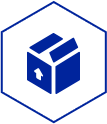
Blog
How IoT Technology Helps the Wine Industry
December 23, 2020
You’ve heard of the IoT but what is it? How can it impact your winery and filtration process?
Let’s imagine the following scenario: On Friday your operator filtered a 2018 Merlot. On Monday, another operator is on shift and filters the same type of Merlot but the output is significantly lower. You notice the difference but cannot explain why. Is the machine chemically cleaned before the weekend? Did the cleaning work correctly? Did the operators use the same machine settings? Is there something wrong with the machine? You quickly realize that this is not the most efficient way to ensure a successful filtration season.
Need for IoT in the wine industry
To improve this very reactive state, you ask each operator to log his/her activities manually. This is a process improvement, but the written data is subjective and open to interpretation. Many wineries exist in a current state where obtaining and understanding data is complicated; the data itself is subjective based on the person collecting it. You’re left trying to find useful insights from the data and more than likely still cannot determine the root cause of the inefficiencies – is it the operator or is it sub-par machine performance?
In general, gathering data on operational and machine performance is an obstacle for many wineries because:
- There is no guarantee of accurate or consistent data collection performed by humans.
- ·Resources (person or equipment) are required to monitor data such as:
- Water flow rate after cleaning
- Wine filtration flow rate
- Run time
- Data is archived after it is collected.
- Expertise is required to analyze for trends and determine optimal settings.
Here is where the Internet of Things (IoT) and smart machines come into play. IoT refers to a network of devices and sensors that capture and communicate data with one another. The sensors in the collect data, for example, flow rate, temperature, uptime/downtime – or the tracking of volumes like water, wine and chemicals
Through the collection of this data, wineries can identify key problems and root cause(s) with their wine filtration process – not only for one specific machine, but even all machines at sites across the globe.
Identifying problems faster enables corrective actions to be taken more quickly as well, helping to ensure a more effective and consistent outcome. With technology in the wine industry, you don’t have to ask each operator to manually record flow rates or when they cleaned – everything is collected and stored by the filtration system and accessible in the cloud.
For example, in the past, an operator may have initiated operation at a flow rate that’s way too fast for the specific wine being filtered. The operator believes that the high instantaneous flow rate is efficient, but does not realize that running too fast can foul the membranes more quickly resulting in the need to stop and clean more frequently. On top of the time lost, you suffer unnecessary wine loss from the hold up in the system before each cleaning. You’re filtering less and have more downtime, this equates to loss of time and revenue.
Benefits of leveraging IoT technology for the wine industry
By leveraging IoT wine processing technology that is connected to the cloud, you no longer have performance variances in data collection between operators; the system collects the data for you. This enables process visibility that can help detect problems, expedite emergency service and better predict requirements for routine maintenance. Furthermore, some more advanced “smarter” machines will even automatically adjust settings to improve machine performance and overall operation efficiency. Pall Food & Beverage has seen customers optimize production on their system three-fold leveraging one such machine, enabling significant operating cost reductions.
Having a machine that optimizes itself based on data also helps winemakers who have analysis paralysis, as collecting the right data for interpretation can quickly become overwhelming.
Gone are the days of manual data collection and guesstimates. With connectivity to the cloud and smart machines, IoT is changing the overall landscape of business. Now winemakers have access to a plethora of data at their fingertips, that can help improve their businesses and bottom line.
Subscribe to our blog to stay up-to-date on the latest food and beverage insights and trends
- Category
- Author
- Sort By



